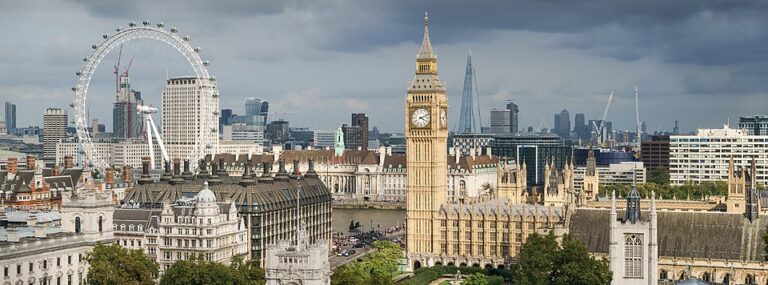
Posted on March 22, 2025, at 9:05 PM EDT
After nearly 24 hours of darkness, delays, and despair, Heathrow Airport is back in business. As of Saturday morning, March 22, 2025, Europe’s busiest travel hub declared itself “open and fully operational” following a substation fire that plunged it into chaos on Thursday night. The blaze at North Hyde Electricity Substation in Hayes, just a few miles from the airport, knocked out power to all four terminals, stranding over 200,000 passengers and scrambling more than 1,350 flights worldwide. But today, the runways are buzzing again, planes are landing, and the winding lines at check-in counters are starting to move—albeit slowly. Heathrow is back, but the road to normalcy is still a bumpy one. Let’s dive into what happened, how they got the lights back on, and what this mess says about the UK’s infrastructure Achilles’ heel.
The Blackout That Stopped the World
It all started late Thursday, March 20, when flames erupted at a high-voltage transformer packed with 25,000 liters of cooling oil. The London Fire Brigade got the call just after 11 PM, deploying 70 firefighters and 10 engines to battle what one resident described as an “apocalyptic” inferno. By Friday morning, the fire was under control, but the damage was done: Heathrow, a global artery handling up to 291,000 passengers daily, was dead in the water. Terminals went dark, information boards flickered out, and planes either circled helplessly or diverted to far-flung airports like Paris, Dublin, and even New York.
The human toll was immediate. Travelers like Alyse Franklin, a 22-year-old Indiana University student, found herself stranded mid-spring break, unable to get home. “Flying already makes me ill,” she told The New York Times, “but not knowing when I’ll get out is unnerving.” Mark Doherty, halfway across the Atlantic, watched his flight’s in-flight map do a U-turn back to JFK. “Typical England—no backup plan,” he grumbled to NPR. Meanwhile, 150 Hayes residents were evacuated, and 16,000 homes lost power as the National Grid scrambled to reconfigure its network.
Heathrow’s initial prognosis was grim: a full closure until midnight Friday. Passengers were told to stay away, airlines like British Airways and Delta canceled flights en masse, and the ripple effects hit global travel hard. But by Friday evening, a glimmer of hope emerged. Power was restored to parts of the airport, and the first plane—a British Airways jet—touched down around 6:30 PM local time, 18 hours after the shutdown began. It was a slow crawl back to life, with repatriation flights prioritized to rescue stranded passengers and reposition aircraft. Now, as Saturday dawns, Heathrow claims it’s fully operational again. So, how did they pull it off, and what’s the catch?
The Recovery: A Race Against Chaos
Getting Heathrow back online was no small feat. The airport consumes as much energy as a mid-sized city, and its backup systems—while functional—weren’t designed to handle a full operation solo. CEO Thomas Woldbye explained to reporters that two of Heathrow’s three substations could keep things ticking, but the loss of North Hyde required a total rewiring of the power supply. “We had to close down systems for safety, then restart everything,” he said. By Friday afternoon, the National Grid had rerouted power to all affected customers, including Heathrow, and engineers worked through the night to reboot the airport’s sprawling network of terminals, gates, and runways.
By Saturday morning, the first departures took off at 6 AM local time, and arrivals trickled in—BA Flight BA56 from Johannesburg landed at 4:37 AM, marking the return of regular passenger service. Heathrow boasted of “hundreds of additional staff” on hand and extra flights to accommodate 10,000 more passengers today. British Airways, the airport’s biggest tenant, said it’s running 85% of its 600 scheduled flights, though delays are inevitable. “Recovering an operation this size is complex,” BA’s CEO Sean Doyle admitted, citing crew and aircraft scattered across Europe. Still, the Department of Transport lifted overnight flight restrictions to ease the backlog—a rare move for an airport capped at 5,800 night operations annually to curb noise.
For passengers, it’s a mixed bag. Heathrow’s live boards show most departures are on time, but arrivals are spottier—nine of the first 20 scheduled landings were canceled by 7 AM GMT. Over 100 flights were axed Saturday as airlines played catch-up, and experts warn disruptions could linger for days. For now, though, the worst seems over. The runways are alive, the lights are on, and travelers are moving again.
The Bigger Picture: A Wake-Up Call for Britain?
Heathrow’s triumphant return doesn’t erase the questions swirling around this debacle. How could a single substation fire cripple a critical piece of national infrastructure? Critics like Willie Walsh, ex-BA chief and current IATA head, called it a “planning failure,” slamming Heathrow for relying on one power source without a robust fallback. Labour peer Toby Harris dubbed it “a huge embarrassment,” while freight boss Jason Bona told the BBC it made Heathrow a “laughing stock” globally. Even Energy Secretary Ed Miliband, ordering an urgent probe, admitted the incident was “unprecedented”—not exactly reassuring when your airport handles 84 million passengers a year.
Investigations are underway, with counter-terrorism police initially involved due to Heathrow’s strategic importance, though they’ve since ruled out foul play. The London Fire Brigade now points to “electrical distribution equipment” as the focus, suggesting a mundane malfunction rather than sabotage. Still, the fallout has exposed vulnerabilities in the UK’s aging power grid. National Grid called substation fires “extraordinarily rare,” but when they happen, the domino effect is catastrophic—67,000 homes and a global travel hub knocked offline in one swoop.
For Heathrow, the financial hit could reach tens of millions, with airlines like BA facing a logistical nightmare and passengers demanding compensation. Woldbye deflected liability talk, saying “procedures are in place” for such incidents, but the blame game is heating up. Was it the airport’s fault for not having better contingencies, or the Grid’s for letting a transformer go up in flames? Either way, the government vows to “learn lessons,” with Transport Secretary Heidi Alexander praising the response but acknowledging the “immense distress” caused.
Heathrow’s Back—But Not Quite Whole
As I write this, planes are soaring over West London again, and Heathrow’s pulse is steadying. Passengers are trickling through Terminal 5, bleary-eyed but relieved. The airport’s Instagram is back to posting serene shots of runways at sunrise, as if the last 48 hours were a bad dream. But the scars remain—canceled flights, missed weddings, and a dented reputation for reliability. For travelers like Phillip Kizun, who rerouted via train and ferry to Dublin, or Farah Rafeeq, still hoping to make a friend’s wedding in Cambodia, the chaos isn’t over.
Heathrow is back, yes, but it’s a fragile comeback. The next few days will test its resilience as airlines realign their fleets and passengers reclaim their plans. For Britain, it’s a stark reminder: when your biggest airport can be sidelined by a single spark, maybe it’s time to rethink what “fully operational” really means. Until then, check your flight status, pack some patience, and hope the lights stay on.
What’s your take? Have a Heathrow horror story from this weekend? Drop it in the comments—I’m all ears.





